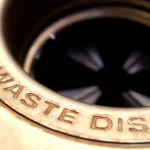Toronto weather is unpredictable. Like death and taxes, the only thing you can be sure of is that the weather is going to happen. Regardless of whether it’s ice, snow or rain, a severe weather event is going to occur and it’s going to affect you as a homeowner. If your home is protected by a functional sump pump installation and backwater valves, you’re probably in good shape. But if you get hit by flooding in spite of that, here’s what you need to do when you submit your claim to the insurance company.
Step 1: Total Up the Value of Your Claim
Okay, let’s say that the bad stuff has happened. It rained and flooded. Now, your beautiful, finished basement is ruined. Clothing, furniture, electronics, and paperwork are destroyed. Mould is growing.
Go downstairs and begin to total your losses. If you have kept receipts, collect all of these as they will be necessary. Once the water has stopped flowing in, rent dryers so you can begin to dry the interior environment. Keep that receipt as well—your insurance company should pay for that expense, but it’s a good idea to call and verify this first.
Step 2: Review Your Current Homeowner’s Insurance Coverage
If you’re out shaking a fist at the skies around Toronto, we can’t blame you. Once you come back indoors, however, pull out your homeowner’s insurance policy and start looking through it carefully. Pick out what is covered and write that down. Loss of use and personal property are usually two of the items covered.
What isn’t covered: flood damage caused by rising waters outside your home. Flooded basements due to severe weather events are usually covered—but check the coverage amounts and verify whether your policy calls for equipment such as a sump pump installation. If it does, and you don’t have one, it’s a sure sign you’re going to have problems with the claim. Insurers are reducing what they are going to cover, which is often an unpleasant surprise to homeowners.
It’s also important to check the value you are insured for and determine the percentage of your claim against that value. For example, if you’re insured for $65,000 and your basement flooding claim is for $10,000, if an assessor can determine that the remainder of your household effects is worth more than the balance of $55,000 s/he may say you are under-insured.
Step 3: Get an Independent Assessment (in some cases)
Most insurance companies provide assessments free of charge as part of their service, but if you have a potentially problematic claim (such as a sump pump installation that isn’t operating correctly) it might pay you to get an independent assessor to review your claim before you submit it. Particularly in the case of high-value claims, the nominal cost of an assessment may be worthwhile to avoid claiming wrongly for items.
The secret to a successful homeowner’s insurance claim for weather damage is ensuring that you comply with the conditions of your policy from the outset and that you follow these steps when you submit your claim.






